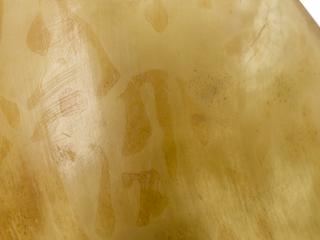
Neolithic flint scraper
- Made:
- 4000-2001 BCE in Greece






Excavated neolithic flint scraper, perhaps used for trephination, Greek, 4000-2001BC
Flint scrapers were used for a wide variety of jobs – such as processing animal hides, shaping wooden or bone objects. It is possible that this was also used for a procedure known as trephination, which is to make a hole in a person’s skull. There is evidence for this procedure, and people surviving it throughout the world. The earliest evidence is from the Palaeolithic age, which began over 3.3 million years ago.
According to this object's records, this item is possibly from one of the caves located on the Greek archipelago. Prior to joining Sir Henry Wellcome’s museum collection, it was part of Charles Schleicher’s collection. A bookseller and publisher Schleicher was interested in prehistoric items and was a founding member of the French Prehistoric Society.
Details
- Category:
- Ethnography and Folk Medicine
- Collection:
- Sir Henry Wellcome's Museum Collection
- Object Number:
- A634842
- Materials:
- flint, fawn colour
- Measurements:
-
overall: 90 mm x 29 mm x 10 mm, .03 kg
- type:
- scrapers
- credit:
- Loan, Wellcome Trust




